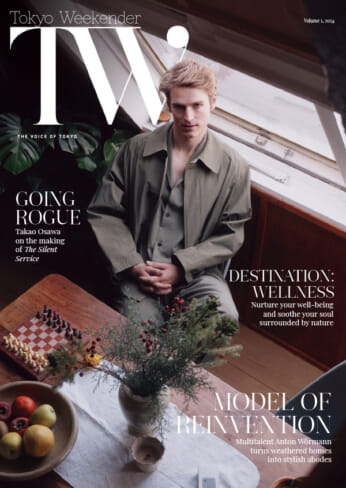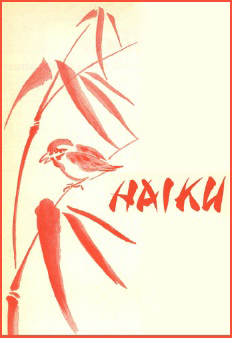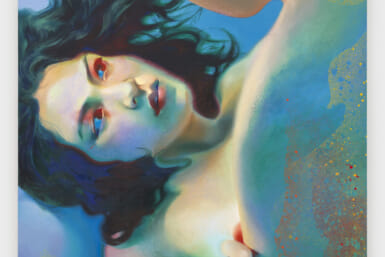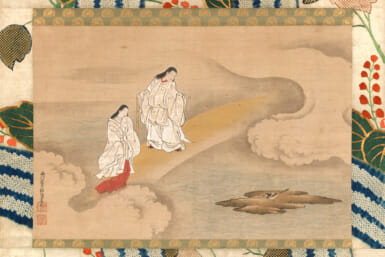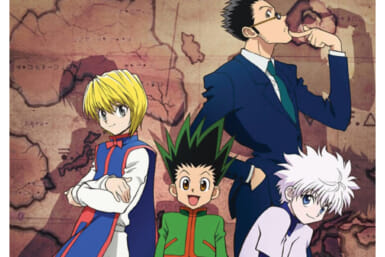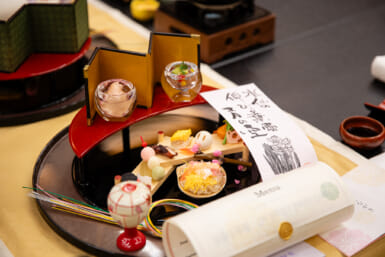This second weekender article about haiku was prompted by, of all things, a squib in the “Laughter, the Best Medicine” section of Reader’s Digest.
One morning a man came out of his house to find the trunk of his car pushed in.
He was relieved to see a note under the windshield.
Then he read it: “As I am writing this, fifty people are watching me.
They think I am giving you my name, address, license number and insurance company.
I’m not!”
—Robert Orben. 21,000 Laughs for all Occasions (Doubleday)
On anyone who reads haiku (and to many who simply read) the last two words rob the tale of humor.
Imagine a turn-of-the-century cartoon. A top-hatted dandy flies ass over teakettle while ogling a woman riding in an open carriage. The caption below: “Lord Dinwitty Kennelworth III, while taking his morning constitutional, is smitten by a fair charmer and thus neglects the banana peel at his feet.”
In the ’30s, allowing for changes in background and circumstance, the caption might have been, “Head over heels in love.”
A more recent rendering of this situation would probably show the top of a banana peel close up; a name card beside it: Dinwitty Kennelworth III, Attorney-at-Law.
The first two examples are slapstick: you get to laugh at a poor sap who slipped on a banana peel. The other is — something else. The juxtaposition of banana and name card gives imagination free play: are you looking at a karmic coincidence or a lawyer’s point-of-purchase promotion? The victim is in a probable future and it might be you.
The last cartoon is poetic in that it takes two commonplaces — banana peel and name card — and by putting them together creates a new dimension of meaning. Haiku do this all the time.
Passport check: / my shadow waits / across the border
You are asked to visualize a single line — the shadow. (You can make that two lines — an “X” — if you want to imagine the border as a stripe or bar.) The passport-holder could be an adventure-bound rambler. Or a man who, heart in mouth, is trying hard not to look at the border guard. Did you ever look at your shadow across a border? Will you, next time? (I got this poem by Canadian haiku poet George Swede out of The Haiku Handbook by Higginson and Parker, McGraw Hill; if you want to write haiku or are interested in haiku, buy, beg, borrow or rip it off.)
I recently got to look at 170 haiku — haiku selected from 70,000 entries in an all-American haiku contest— and was asked to choose about 30 which I thought especially fine, together with the one I thought best of the lot. It is not easy to make up your mind about the best poem among many fine poems. Ignoring the grand-prize winner. I picked my 30; read my selections over while drinking half a bottle of wine, and went to bed. When I woke up I tried to see which haiku came to mind, figuring it had to be pretty powerful to survive all that sleeping.
Minutes after dawn / the sun goes behind the moon— / Clay beneath my nails.
It may have been the alcohol, but the first time around I didn’t see much in this poem by Christopher Guerin of Indiana. My unconscious, quicker on the uptake, saw what the analytical part of my mind should have seen had I worked with my hands a lot: the moon’s shadow appearing at the sun’s edge — like the black crescent of dirt under a fingernail.
To say that haiku leaves things to the reader’s imagination, is simplistic. By detonating a single instant between your cars, haiku forces you to look at something as if for the first time. Here is where the discipline comes in: the silent explosion that marks a haiku calls for a magical amalgam of idea, words, rhythm and sound.
As member of English-language haiku contest judge panels, I have looked at thousands of haiku written by kids. The majority were awful (the haiku; I wouldn’t know about the kids). It may be the teachers’ fault some of the time. Teacher says: “Now, children, we are going to write haiku. Remember, the beat is 5-7-5, and it should be about nature.” Kids try to please teachers; Johnny dutifully puts down: “The sun is shining / I love to play in the sun / nature is pretty.” A good teacher could draw out what Johnny really had in mind, probably, “The sun is shining / I want to go and play in I some of that nature.”
(Once, a kid’s haiku caused me acute embarrassment. I awarded, along with the other judges, first prize to a haiku which all agreed showed absolute genius. Barely in time, we discovered that the child had cribbed the poem from a book of haiku — written by my ex-wife.)
The Bible has something on the line of “When I was a child, I saw as a child…” Adults suddenly put into the position of seeing like a child tend to freak out or become poets which some say is the same thing. Kids see things in a tripped-out way, but being kids they write like kids — sloppy. Teach a kid to write real haiku and you’ll get some amazing insights.
Last year I took over an English class at Mendocino Grammar School, Mendocino, California, for a “haiku hour.” The 5-7-5 rule is good discipline, but with my one little hour to work in I wanted us to have fun. Go for three short lines, I told them.
To make the poem below, I blackboarded the line “On Mendo headlands.” I then asked the kids to think of the next line and to raise hands when they had one. Hands shot up, I collected the papers; chose what I thought was the best line and gave the reason why I thought so. We repeated this once more and got a haiku of sorts.
“O.K.,” I told them. “You got the idea … let’s keep it up and see what comes out.”
Here’s what developed. (Renga are linked haiku.)
MENDOCINO RENGA
By the Children of Mendocino Grammar School
On Mendo headlands
the stars so bright so cold
the wind through my hair
Moon rising slow
something splashing
out at sea
I speak into the dark
don’t know what to say
what to do
A white owl passes
through the black
hunting maybe a mouse
Lights out at sea
I on the headlands
retreat with the tide
After the first line, I played the role of one those word processing programs that correct spelling punctuation and minor grammatical errors. The average age of that class was 11. One Mendocino haiku-master wrote:
the rainbow flies in the winter’s eyes
Her name is Ina Ryerson and she must be nearly 12 now.
Early in August, at the Expo ’88 Japan Pavilion in Brisbane an 11-year-old girl from Vietnam showed me a haiku. She visualized fireworks as unfinished bamboo baskets in the sky. That evening there were fireworks. She was right.
